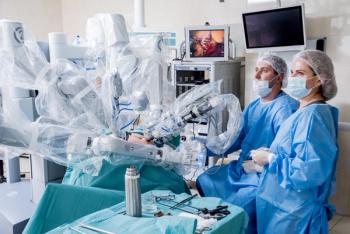
Using EHR and genetic data to identify disease subgroups
Electronic health records may be the key to improving medical care and health outcomes for cardiology patients, said Marc S. Williams, MD, at the 2016 AHA Conference.
Among the efforts to improve medical care and health outcomes for cardiology patients is the increased work underway to more precisely diagnose and treat patients based on a greater understanding of disease subgroups.
One way to do this is through the use of electronic health record (EHR) systems.
“Data from EHRs can be used to identify patients with certain characteristics that can trigger recommendations for additional investigations to aid clinicians in providing optimal care for their patients,” said Marc S. Williams, MD, director of the Genomic Medicine Institute for Geisinger Health System in Danville, Pennsylvania.
Research underway is showing that by pairing data from EHRs with genetic data it is now possible to create robust phenotype algorithms that can successfully be used for clinical and basic research.
"Phenotyping algorithms if developed properly are generalizable across different systems,” said Williams, adding that “phenotypes derived from EHR data have been used successfully in discovery research.”
In his presentation entitled “Identifying Disease Subgroups Using EHR and Genetic Data,” delivered during the American Heart Association (AHA) Scientific Sessions in New Orleans, Williams spoke on how EHR data is used to derive phenotypes and described a number of projects relevant to cardiology that show the successes for discovery and research when combining EHR data and genetic data.
He opened his talk with a description of efforts underway through a national network organized and funded by the National Human Genome Research Institute called eMERGE that is supporting the implementation of genomic medicine by combining genetic data with electronic medical record systems for large scale, high-throughput genetic research.
Short for Electronic Medical Records and Genomics, eMERGE is working on a number of fronts: developing algorithms to identify specific phenomic traits within an individual, creating algorithms using multiple variables that enable researchers to accurately identify traits and perform analyses, developing best practice materials and data standardization tool to aid with phenotyping protocols and collaboration, and a final aim to advance the science of transportable phenotyping methods, structure and standards and portable components of algorithms and methods.
Williams noted several projects underway at different research institutes to develop algorithms based on cardiology phenotypes through an online site called Phenotype Knowledge Base (PheKB), which allows researchers to collaborate on building and sharing validated phenotype algorithms. These projects include work being done on phenotypes for atrial fibrillation, clopidogrel poor metabolizers, heart failure with differentiation between preserved and reduced ejection fraction, high-density lipoproteins, lipids and MidSouth CDRN (Coronary Heart Disease Algorithm).
Overall, he said, there are a total of 537 projects published as of April 2016.
Commenting on a recent JAMA study on the arrhythmia-related genetic variants with phenotypes documented in EHRs, of which he was coauthor, Williams said that the study was done to look for evidence of EKG and other abnormalities that would suggest an inherited arrhythmia phenotype in individuals carrying a genetic change that would be suggestive of one of these disorders. The study found that “none of the genetic variant carriers had phenotypic evidence of the disorder,” he said. “This raises questions about how predictive variants in the two genes are of significant disease.”
Williams also explored approaches to using active EHR data mining and genetic sequence data to inform diagnosis and treatment. To do this, he walked participants through a hypothetical case study to illustrate the future potential of using EHR data with genetic data to make a differential diagnosis of a patient who presents with an episode of syncope and a therapeutic algorithm to follow once that diagnosis is made.
Overall, he emphasized the potential for this type of research when applied to advance medical care and patient outcomes. “Dynamic phenotyping in the clinic holds promise for advanced diagnostic and clinical decision support,” he said.
Newsletter
Stay informed and empowered with Medical Economics enewsletter, delivering expert insights, financial strategies, practice management tips and technology trends — tailored for today’s physicians.
















